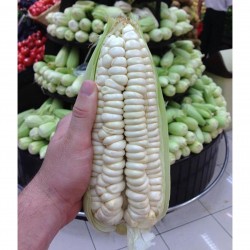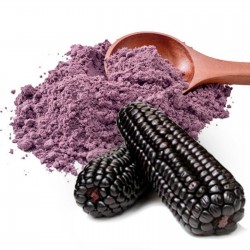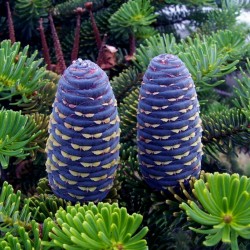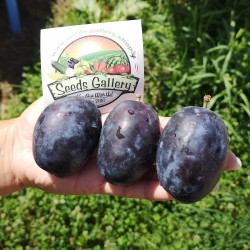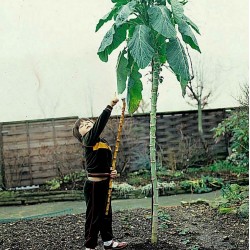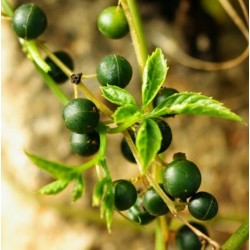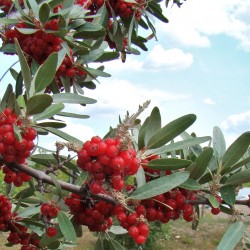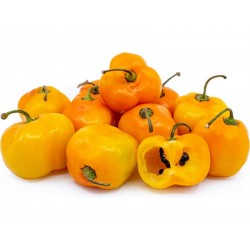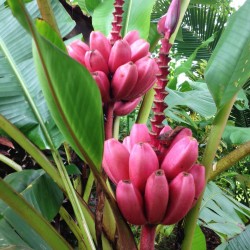Seeds Gallery Com,
5/
5
<!DOCTYPE html>
<html>
<head>
<meta http-equiv="Content-Type" content="text/html; charset=UTF-8" />
</head>
<body>
<h2><strong>Насіння Сосна́ сибі́рська (Pinus sibirica)</strong></h2>
<h2><span style="color: #ff0000;"><strong>Ціна за упаковку з 10 насінин.</strong> </span></h2>
<p><b>Сосна́ сибі́рська</b><span> </span>(<i>Pinus sibirica</i>) —<span> </span>хвойне<span> </span>вічнозелене<span> </span>дерево<span> </span>родини<span> </span>соснових.<span> </span>Максимальна тривалість життя — 800—850 років, висота — до 35—45 м,<span> </span>діаметр<span> </span>стовбура — до 2 м. Росте у більшій частині<span> </span>Сибіру<span> </span>на висотах 100—200 м над рівнем моря, піднімаючись до 1000—2400 м у південному<span> </span>Алтаї. Відома в народі також як<span> </span><b>кедр сибірський</b>, ця сосна широко використовується як джерело цінної<span> </span>деревини<span> </span>та їстівного насіння — так званих<span> </span>кедрових горіхів<sup id="cite_ref-1" class="reference">[1]</sup>.</p>
<p>Раніше об'єднували в один вид з<span> </span>європейською кедровою сосною<span> </span>(<i>Pinus cembra</i>), яка має менші<span> </span>хвою<span> </span>та шишки, ніж її сибірський родич<sup id="cite_ref-Скаткін_2-0" class="reference">[2]</sup>.</p>
<p>Хоча сибірська сосна широко відома під назвою<span> </span><b>сибірського кедра</b><span> </span>або<span> </span><b>кедрової сосни</b>, вона не пов'язана зі справжнім<span> </span>кедром<span> </span>(<i>Cedrus</i>), який росте лише в<span> </span>Середземномор'ї<span> </span>та<span> </span>Гімалаях. Імовірно, сибірську сосну назвали кедром<span> </span>росіяни — ще в<span> </span>XV столітті<span> </span>або навіть раніше, коли досліджували Сибір.</p>
<h2><span class="mw-headline" id="Походження_назви">Походження назви</span></h2>
<p>Дослідники припускають, що другу поширену назву — сибірський кедр — сосні сибірській дали російські першопроходці, які в<span> </span>XV столітті<span> </span>досліджували Сибір і вперше зустріли це дерево. Незнайому сосну з великими горіхами в<span> </span>шишках, не схожу ні на<span> </span>ялину, ні на<span> </span>ялицю, ані на<span> </span>модрину, вони назвали сибірським кедром, оскільки вона нагадала їм священний ліванський кедр, про який згадується в<span> </span>Біблії. От як про це пише російський вчений<span> </span>Федір Кеппен:</p>
<dl>
<dd>
<table>
<tbody>
<tr>
<td>«Вірогідніше, що козаки, які прийшли на Урал, зачаровані виглядом чудового хвойного дерева, досі їм невідомого, дали йому навмання назву славного кедра, про який вони знали лише з чуток»<sup id="cite_ref-Дюк_4-0" class="reference">[4]</sup>.</td>
</tr>
</tbody>
</table>
</dd>
</dl>
<h2><span id=".D0.91.D0.BE.D1.82.D0.B0.D0.BD.D1.96.D1.87.D0.BD.D1.96_.D1.85.D0.B0.D1.80.D0.B0.D0.BA.D1.82.D0.B5.D1.80.D0.B8.D1.81.D1.82.D0.B8.D0.BA.D0.B8"></span><span class="mw-headline" id="Ботанічні_характеристики">Ботанічні характеристики</span></h2>
<h3><span id=".D0.91.D1.83.D0.B4.D0.BE.D0.B2.D0.B0_.D1.96_.D0.B6.D0.B8.D1.82.D1.82.D1.94.D0.B4.D1.96.D1.8F.D0.BB.D1.8C.D0.BD.D1.96.D1.81.D1.82.D1.8C"></span><span class="mw-headline" id="Будова_і_життєдіяльність">Будова і життєдіяльність</span></h3>
<p>Сибірська сосна може досягати 45 м заввишки, має дуже густу конусоподібну<span> </span>крону. Вершина притуплена, а у старих дерев часто їх кілька.</p>
<h4><span id=".D0.9A.D0.BE.D1.80.D0.B0"></span><span class="mw-headline" id="Кора">Кора</span></h4>
<p>Кора<span> </span>стовбура — гладенька, сіра, тонка, що робить дерево чутливим до механічних пошкоджень (особливо під час заготівлі<span> </span>насіння). У старих дерев кора — сіро-бура, луската, з тріщинами. Однолітні гілки вкриті густим рудим пухом. Діаметр<span> </span>стовбура — до 2 м.</p>
<h4><span id=".D0.9A.D0.BE.D1.80.D1.96.D0.BD.D1.8C"></span><span class="mw-headline" id="Корінь">Корінь</span></h4>
<p>Коренева система<span> </span>потужна, поліморфна, її будова залежить від особливостей<span> </span>ґрунту. Складається з короткого стрижневого кореня, від якого відходять бокові. 30 % всіх коренів розташовано на глибині 20 см, інші йдуть на глибину 1—1,5 м. На ґрунтах, які пізно тануть, коренева система поверхнева, але вітровальним дерево від цього не стає. У таких умовах корені дуже довгі і створюють велику площу опору; корені сусідніх дерев зростаються, що значно підвищує їх вітростійкість. У перезволожених ґрунтах, де добре розвинутий<span> </span>моховий<span> </span>покрив, нерідко утворюються<span> </span>придаткові корені. Коренева система завершує формування до 40 років, потім вона тільки подовжується і потовщується.</p>
<h4><span class="mw-headline" id="Хвоя">Хвоя</span></h4>
<p>Хвоя<span> </span>щільна, 6-13 см у довжину, темно-зелена з сизим нальотом, широка (1-2 мм), тригранна, зібрана в пучки по 5. Тривалість життя хвої — 5-11 років.</p>
<p>Сибірська сосна дуже схожа на<span> </span>європейську кедрову сосну<span> </span>(<i>Pinus cembra</i>) та<span> </span>звичайну сосну<span> </span>(<i>Pinus sylvestris</i>). Відрізнити від останньої можна за хвоєю — у сибірської сосни хвоїнки зібрані в пучки по 5 штук, у звичайної сосни — по 2.</p>
<h4><span id=".D0.A8.D0.B8.D1.88.D0.BA.D0.B8"></span><span class="mw-headline" id="Шишки">Шишки</span></h4>
<p>Сибірська сосна — однодомна. Квітне у червні.<span> </span>Макростробіли<span> </span>(насінневі<span> </span>шишки) — жіночі<span> </span>репродуктивні органи<span> </span>сибірської сосни, що містять насіння, — прямостоячі, дворічні, темно-червоного або світло-бурого кольорів, майже циліндричні, 5—13 см у довжину, діаметром — 5-8 см, на товстій ніжці довжиною 8 мм. Розміщуються вертикально на кінцях<span> </span>пагонів<span> </span>збоку від верхівкової<span> </span>бруньки. Зазвичай їх — 1-4 на пагоні, рідше — 7-9. Утворюються лише на освітлених гілках. Містять 80-140 насінин (з яких тільки 50-60 є повноцінними). Запилюються вітром у травні-червні.</p>
<p>Мікростробіли<span> </span>(пилкові шишки) — чоловічі репродуктивні органи, в яких дозріває<span> </span>пилок, — однорічні, карміново-фіолетового кольору, яйцеподібні, довжиною 2-3 см, зібрані у групи по 2-60 штук в основі пагонів.</p>
<p>Якщо освітлення вдосталь — крони обох шишок можуть формуватися на одній гілці.</p>
<h4><span id=".D0.9D.D0.B0.D1.81.D1.96.D0.BD.D0.BD.D1.8F"></span><span class="mw-headline" id="Насіння">Насіння</span></h4>
<p>Тверді насінини, так звані<span> </span>кедрові горіхи, дозрівають у серпні—вересні, наступного року після<span> </span>запилення. Насінина яйцеподібна, коричнева, довжиною 8-14 мм і 6-9 мм в ширину, з товстою дерев'янистою шкаралупою. Маса 1000 насінин — 100—400 г. Дозріле насіння легко лущиться.</p>
<p>Шишки утворюються лише у верхній частині<span> </span>крони — висотою 1-1,5 м (рідко — 2 м). Насіння починає з'являтися на поодиноких садових деревах у 15-30 років, якщо вони мають належний догляд і підгодівлю. У густих лісових насадженнях — у 40-50 років. Гарні врожаї бувають кожні 4-5 років, відмінні — що 10-15. У врожайні роки на дорослому дереві буває до 80-100 шишок, рідко — 140. Посилене розмноження триває з 160 до 260 років, після чого поступово згасає. Розмножується лише в групових насадженнях, адже вид<span> </span>анемохорний<span> </span>(вітрозапильний).</p>
<h3><span id=".D0.A0.D0.BE.D0.B7.D0.BC.D0.BD.D0.BE.D0.B6.D0.B5.D0.BD.D0.BD.D1.8F"></span><span class="mw-headline" id="Розмноження">Розмноження</span></h3>
<p>Розмножується сибірська сосна<span> </span>насінням. Сходи можливі й після 4 років відлежування. Шишки дозрівають у кінці серпня — на початку вересня наступного після цвітіння року і падають разом із насінням на землю.</p>
<p>Для садових насаджень насіння дерева краще сіяти в рік збирання, у кінці вересня — на початку жовтня, за місяць до замерзання<span> </span>ґрунту. Перші 20 років сосна росте дуже повільно — сантиметрів на 10 щороку. Далі — вже на 30-40 см на рік. У дорослому віці дерево погано переносить пересаджування. У 4-5 років його висота становить 15 см, у 10 років — до 1,5 м, у 20 — 2,5 м, у 30 — до 9 м, діаметр крони — 3 м. У 70 років сибірська сосна сягає 23 м заввишки, діаметр стовбура — 0,5 м. У 100 років висота дерева становить близько 27 м. Тривалість життя сосни може становити до 800—850 років.</p>
<p>Штучно дерево розводять і<span> </span>вегетативно — живцями, які прищеплюють на інших видах сосни — наприклад, на сосні звичайній. Живець верхівки дорослого кедра, прищеплений на підліткове дерево, добре приживається, швидко галузиться і вже через 3-4 роки дає шишки<sup id="cite_ref-Чивилихин_5-0" class="reference">[5]</sup>.</p>
<p>Найкращий час щеплення — перша половина травня, коли в прищепі (маленькому деревці сосни чи кедра) починають гнати смоли. Прищеплюють невеликий кедровий живець із брунькою на головний верхівковий торішній пагін<sup id="cite_ref-Чивилихин_5-1" class="reference">[5]</sup>.</p>
<h3><span id=".D0.9F.D0.BE.D1.88.D0.B8.D1.80.D0.B5.D0.BD.D0.BD.D1.8F"></span><span class="mw-headline" id="Поширення">Поширення</span></h3>
<p><span class="mw-headline"><span>Сибірська сосна має дуже великий </span>ареал<span> — від верхів'я річки </span>Вичегди<span> на північному-сході європейської частини </span>Росії<span> і до верхів'я річки </span>Алдан<span> у Східному </span>Сибіру<span>. На північ ця сосна доходить до 68° 30' північної широти вздовж річки </span>Єнісей<span>, на півдні — до півночі </span>Монголії<span>. Ліси сибірської сосни ростуть у хвойно-тайговій зоні, північній частині </span>Євразії<span>, у центрі </span>Китаю<span>, в </span>Японії<span>, </span>Північної Кореї<span>, Монголії, а також у </span>Північній Америці<span>.</span></span></p>
<p>У минулому дерево було поширене ще ширше і густіше, але його винищили лісові пожежі та масові вирубки — для збирання кедрових горіхів і отримання цінної деревини. Відомо, що предки цього виду — родом зі Східної<span> </span>Азії — в<span> </span>третинний період<span> </span>(близько 66-2,5 млн років тому) охоплювали велику територію від Азії до<span> </span>Європи<sup id="cite_ref-6" class="reference">[6]</sup>.</p>
<p>Сибірська сосна надає перевагу родючим, добре дренованим, свіжим, глибоким, легким<span> </span>суглинкам. Дерево світлолюбне, але в молодості досить тіньовитривале — нормально розвивається під пологом материнських рослин. Зимостійкість дуже висока — без пошкоджень витримує морози до — 50 °C.</p>
<p>Сибірська сосна вимоглива до вологості ґрунту, до<span> </span>відносної вологості повітря, особливо в зимовий період. Якщо вологість буде недостатньою — насіння не утвориться, тому в місцях із сухим кліматом рости не може, що обмежує її розселення в<span> </span>лісостепу.</p>
<p>Якщо насіння звичайної сосни поширює вітер, то кедрові горіхи для нього заважкі. Допомагає дереву<span> </span>горіхівка — птах, трохи менший за<span> </span>галку. Довгим дзьобом горіхівка вилущує з шишок горіхи, частину з'їдає, а решту складає під язик в особливий мішечок, який вміщує 8—10 насінин. У надійному місці серед моху, під кущем або шматком кори птах ховає горіхи. Взимку, у сильні завірюхи, піднімає їх вище, щоб не замело снігом. Але частина схованок лишається глибоко під снігом. Навесні на їх місці з'являються молоді паростки кедра.</p>
<p>Найстаріші насадження сосни людиною, що збереглися донині — це Толгський кедровий гай, розташований поблизу колишнього<span> </span>Толгського монастиря<span> </span>на березі<span> </span>Волги, за 8 кілометрів від<span> </span>Ярославля. Посаджений він був ще за часів<span> </span>Івана Грозного, у<span> </span>70-х роках<span> </span>16 століття<sup id="cite_ref-Gaveman_7-0" class="reference">[7]</sup>. Толгські<span> </span><i>«кедри»</i> — потужні дерева з широкою кроною і товстими, більше метра в діаметрі, стовбурами. Незважаючи на свій поважний чотирьохсотлітній вік, вони досі плодоносять.</p>
<h3><span id=".D0.A5.D0.B2.D0.BE.D1.80.D0.BE.D0.B1.D0.B8_.D1.82.D0.B0_.D1.88.D0.BA.D1.96.D0.B4.D0.BD.D0.B8.D0.BA.D0.B8"></span><span class="mw-headline" id="Хвороби_та_шкідники">Хвороби та шкідники</span></h3>
<p>Коренева губка<span> </span>і<span> </span>трутовик Швейнітца<span> </span>вражають коріння дерева, що сприяє вітровалу.</p>
<h2><span id=".D0.9F.D1.80.D0.B0.D0.BA.D1.82.D0.B8.D1.87.D0.BD.D0.B5_.D0.B2.D0.B8.D0.BA.D0.BE.D1.80.D0.B8.D1.81.D1.82.D0.B0.D0.BD.D0.BD.D1.8F"></span><span class="mw-headline" id="Практичне_використання">Практичне використання</span></h2>
<h3><span id=".D0.9C.D0.B5.D0.B4.D0.B8.D1.86.D0.B8.D0.BD.D0.B0"></span><span class="mw-headline" id="Медицина">Медицина</span></h3>
<p>Головне багатство сибірської сосни — так звані<span> </span>кедрові горіхи. Вони смачні, поживні та цілющі, містять<span> </span>вітамін А<span> </span>(ретинол),<span> </span>вітаміни групи В<span> </span>(протиневротичні), які покращують серцеву діяльність і необхідні для нормальної діяльності нервової системи. Особливо багато в насінні<span> </span>вітаміну E<span> </span>(токоферолу, що в перекладі з грецької означає «несу потомство»). Недарма в роки добрих врожаїв насіння значно зростає і плодовитість<span> </span>соболя<span> </span>та<span> </span>вивірок<sup id="cite_ref-ignatenko_8-0" class="reference">[8]</sup>. Медики стверджують, що кедрові горіхи здатні попереджувати<span> </span>туберкульоз<span> </span>та<span> </span>малокрів'я<sup id="cite_ref-ignatenko_8-1" class="reference">[8]</sup>.</p>
<div class="thumb tleft">
<div class="thumbinner"><img alt="Насіння Сосна́ сибі́рська (Pinus sibirica)" src="https://upload.wikimedia.org/wikipedia/commons/thumb/d/d0/Pinus-cembra-Tomsk.JPG/250px-Pinus-cembra-Tomsk.JPG" decoding="async" width="250" height="166" class="thumbimage" srcset="//upload.wikimedia.org/wikipedia/commons/thumb/d/d0/Pinus-cembra-Tomsk.JPG/375px-Pinus-cembra-Tomsk.JPG 1.5x, //upload.wikimedia.org/wikipedia/commons/thumb/d/d0/Pinus-cembra-Tomsk.JPG/500px-Pinus-cembra-Tomsk.JPG 2x" data-file-width="1355" data-file-height="899" title="Насіння Сосна́ сибі́рська (Pinus sibirica)" />
<div class="thumbcaption">
<div class="magnify"></div>
Хвоя<span> </span>сосни сибірської</div>
</div>
</div>
<p>Смола<span> </span>дерева —<span> </span>живиця — має бальзамуючі властивості. Здавна мешканці<span> </span>Сибіру<span> </span>та<span> </span>Уралу<span> </span>використовували її для лікування гнійних ран, порізів, опіків. У часи<span> </span>Німецько-радянської війни<span> </span>кедрову живицю успішно використовували в<span> </span>шпиталях<span> </span>для лікування поранених солдат. Вона вберігає рани від зараження, зупиняє<span> </span>гангренозні процеси<sup id="cite_ref-ignatenko_8-2" class="reference">[8]</sup>. Також живиця містить до 19 %<span> </span>скипидару<sup id="cite_ref-9" class="reference">[9]</sup>.</p>
<p>Хвоя дерева багата на<span> </span>вітамін C,<span> </span>каротин, а також<span> </span>кальцій,<span> </span>фосфор,<span> </span>марганець,<span> </span>залізо,<span> </span>мідь,<span> </span>кобальт.</p>
<h3><span id=".D0.9F.D1.80.D0.BE.D0.BC.D0.B8.D1.81.D0.BB.D0.BE.D0.B2.D1.96.D1.81.D1.82.D1.8C"></span><span class="mw-headline" id="Промисловість">Промисловість</span></h3>
<p>Цінна<span> </span>деревина<span> </span>сибірської сосни. Вона стійка до гниття і розтріскування, легко обробляється, має гарну текстуру, приємний запах та бактерицидні властивості. З неї виготовляють меблі. У шафах, зроблених із сибірської сосни, не заводиться<span> </span>міль.</p>
<p>Деревина сосни резонансна, тому з неї виготовляють музичні інструменти. Також вона має меншу щільність і легша в обробці, ніж, наприклад, деревина сосни звичайної, з неї виготовляють<span> </span>олівці<span> </span>та акумуляторний<span> </span>шпон.</p>
<p>Вулики, виготовлені з деревини сибірської сосни, добре заселяються<span> </span>бджолами. А молоко в такому дерев'яному посуді довго не прокисає, має приємний смак.</p>
<h3><span id=".D0.9A.D1.83.D0.BB.D1.96.D0.BD.D0.B0.D1.80.D1.96.D1.8F"></span><span class="mw-headline" id="Кулінарія">Кулінарія</span></h3>
<p>Мешканці<span> </span>тайги<span> </span>називають сибірську сосну «хлібним деревом». Її насінини —<span> </span>кедрові горіхи — їдять сирими, з них видавлюють<span> </span>олію, роблять висококалорійні<span> </span>вершки<span> </span>та<span> </span>молоко<sup id="cite_ref-Fedotov_10-0" class="reference">[10]</sup>.</p>
<p>У Сибіру горіхи переробляють на спеціальних заводах. Столову олію отримують холодним пресуванням, а технічну — під час повторного, гарячого. Олія з кедрових горіхів ясно-жовтого кольору, з приємним смаком, належить до жирних висихаючих олій і має велике значення не лише як харчовий продукт, але й високо цінується в лакофарбовій промисловості (для виготовлення олійних фарб, лаків), а також у<span> </span>парфумерії<span> </span>та медицині.</p>
<div class="thumb tleft">
<div class="thumbinner"><img alt="Насіння Сосна́ сибі́рська (Pinus sibirica)" src="https://upload.wikimedia.org/wikipedia/commons/thumb/7/76/Siberian_pine_nuts-2.jpg/250px-Siberian_pine_nuts-2.jpg" decoding="async" width="250" height="188" class="thumbimage" srcset="//upload.wikimedia.org/wikipedia/commons/thumb/7/76/Siberian_pine_nuts-2.jpg/375px-Siberian_pine_nuts-2.jpg 1.5x, //upload.wikimedia.org/wikipedia/commons/thumb/7/76/Siberian_pine_nuts-2.jpg/500px-Siberian_pine_nuts-2.jpg 2x" data-file-width="3264" data-file-height="2448" title="Насіння Сосна́ сибі́рська (Pinus sibirica)" />
<div class="thumbcaption">
<div class="magnify"></div>
Кедрові горіхи</div>
</div>
</div>
<p>В ядрах кедрових горіхів на 37 %<span> </span>вуглеводів<span> </span>і<span> </span>білкових речовин<span> </span>припадає до 50 %<span> </span>жирів<sup id="cite_ref-Fedotov_10-1" class="reference">[10]</sup>. Але такий високий вміст рослинної олії досягається тільки у стиглих плодах. Якщо збивати зелені шишки, горіхи будуть неповноцінні, лише пошкоджуються плодоносні гілки.</p>
<p>Макуха, що залишається після виготовлення олії, використовується для виготовлення<span> </span>халви. Дуже тонко розтираючи горіхи з водою отримують кедрове молоко. Так само роблять і вершки, лише кількість води в них мінімальна<sup id="cite_ref-Fedotov_10-2" class="reference">[10]</sup>.</p>
<h3><span id=".D0.9E.D0.B7.D0.B5.D0.BB.D0.B5.D0.BD.D0.B5.D0.BD.D0.BD.D1.8F"></span><span class="mw-headline" id="Озеленення">Озеленення</span></h3>
<p>Сибірська сосна дає багато пилку і застосовується як декоративна рослина — в одиничних та групових насадженнях.</p>
<p>Виділяючи<span> </span>фітонциди, дерево очищує повітря. У лісі сибірської сосни<span> </span>мікрофлори<span> </span>в 2-3 рази менше, ніж, наприклад, у березовому. Повітря в таких насадженнях майже стерильне<sup id="cite_ref-pomestye_11-0" class="reference">[11]</sup>, а деревина відлякує<span> </span>міль,<span> </span>комарів<span> </span>та мошок.</p>
<p>Однак сибірська сосна дуже чутлива до забрудненості повітря шкідливими газами. Тому її небажано саджати поблизу великих промислових підприємств.</p>
<h3><span id=".D0.9A.D0.B5.D0.B4.D1.80.D0.BE.D0.B2.D0.B8.D0.B9_.D0.BF.D1.80.D0.BE.D0.BC.D0.B8.D1.81.D0.B5.D0.BB"></span><span class="mw-headline" id="Кедровий_промисел">Кедровий промисел</span></h3>
<p>Заготівля кедрових горіхів — давній традиційний промисел сибіряків. У дореволюційні роки в багатьох районах Західного<span> </span>Сибіру<span> </span>він мав вельми важливе значення в господарській діяльності населення, а місцями був основним джерелом грошових доходів. Досі серед населення тайгових селищ існують вислови: «шишкувати», «промишляти» або «бити шишку», збереглися кігті,<span> </span>байдони, тертки, поджі та інші знаряддя промислу<sup id="cite_ref-12" class="reference">[12]</sup>.</p>
<p>До революції врожаї кедрових горіхів часто збирали непродумано: просто зрубували здорові дерева. З<span> </span>30-х років<span> </span>і досі збиральники — шишкарі — залазять на дерева і особливими жердинами збивають з них шишки<sup id="cite_ref-Gaveman_7-1" class="reference">[7]</sup>.</p>
<p>На початку<span> </span>60-х років<span> </span>минулого століття в<span> </span>СРСР<span> </span>кедрові сосни охоплювали понад 25 мільйонів гектарів<sup id="cite_ref-Gaveman_7-2" class="reference">[7]</sup>.</p>
<h2><span id=".D0.A1.D0.BE.D1.81.D0.BD.D0.B0_.D1.81.D0.B8.D0.B1.D1.96.D1.80.D1.81.D1.8C.D0.BA.D0.B0_.D0.B2_.D0.BA.D1.83.D0.BB.D1.8C.D1.82.D1.83.D1.80.D1.96"></span><span class="mw-headline" id="Сосна_сибірська_в_культурі">Сосна сибірська в культурі</span></h2>
<ul>
<li>У давньому<span> </span>Новгороді<span> </span>з сибірської сосни робили<span> </span>ковші<span> </span>для пиття,<span> </span>діжки,<span> </span>цебри<span> </span>та інші предмети побуту<sup id="cite_ref-pomestye_11-1" class="reference">[11]</sup>. Вважалося, що збережені в посуді з цього дерева продукти та напої набували живильної сили і подовжували життя.</li>
<li>Дослідник і мандрівник<span> </span>Микола Пржевальський<span> </span>розповідав, що коли сибіряки збиралися довгими зимовими вечорами, то полюбляли полускати кедрові горіхи. Клацали їх найчастіше у повній мовчанці. Це називається — вести «сибірську розмову»<sup id="cite_ref-Gaveman_7-3" class="reference">[7]</sup>.</li>
<li>А знавець сибірських лісів,<span> </span>краєзнавець<span> </span>і<span> </span>натураліст<span> </span>Василь Дмитрієв<span> </span>у<span> </span>1818<span> </span>році в статті<span> </span><i>«Сибірський кедр»</i><span> </span>писав:</li>
</ul>
<dl>
<dd>
<table>
<tbody>
<tr>
<td>«Славтеся, місця, які любить сонце, гордіться, висоти ліванські, своїми кедрами: не бачивши вас в моїй вітчизні, на землі, що належить Росії, не маю права і величати вас, але натомість в очах моїх тінистий кедр багатого Сибіру не поступиться вам в красі своїй і мені вас замінить. Яка величність в поставі цього дерева, яка священна тінь в густині лісів його!»<sup id="cite_ref-Проскуряков_13-0" class="reference">[13]</sup>.
<div>
<div class="NavFrame collapsed" id="NavFrame2">
<div class="NavHead">Оригінальний текст<span> </span><span title="російською мовою">(рос.)</span>[показати]</div>
</div>
</div>
</td>
</tr>
</tbody>
</table>
</dd>
</dl>
<ul>
<li>Кедрову тайгу описував<span> </span>Іван Багряний<span> </span>у романі<span> </span><i>«Тигролови»</i><span> </span>(з<span> </span>1932<span> </span>по<span> </span>1937<span> </span>рік він відбував заслання в таборах<span> </span>Далекого Сходу):</li>
</ul>
<dl>
<dd>
<table>
<tbody>
<tr>
<td>«Сорокаметрові кедри, випередивши всіх у змаганні до сонця, вигнались рудими, голими стовбурами з долішнього хаосу геть, десь під небо і заступили його коронами. Там по них ходило сонце і пливли над ними білі хмари. Слідком за кедрами пнулися велетенські осики та інші листаті гіганти, що, бувши нижчі за кедри, творили другий ярус. Потім височенна ліщина колючого горіха, ялини, де-не-де берізки, берестина, черемха, перевиті ліанами дикого винограду та в'юнків, ішли вгору третім ярусом. А внизу — в четвертому ярусі — суцільний хаос. Місцями густа, мов щітка, звичайна ліщина, височенні трави і бур'яни. Повалені вздовж і впоперек дерева, мов велетні на полі бою, потрухлі і ще непотрухлі, одні з скрізними дірами-дуплами, як жерла небувалих гармат, другі вивернуті з усією системою коріння, що тримали його руба, як стіни або як велетенські пригорщі зі стиснутими межи пальцями камінням і землею»<sup id="cite_ref-УКРЛІТ.ORG_14-0" class="reference">[14]</sup>.</td>
</tr>
</tbody>
</table>
</dd>
</dl>
</body>
</html>
T 26
